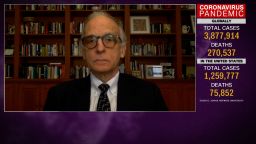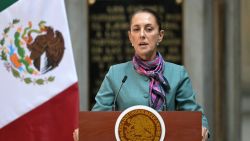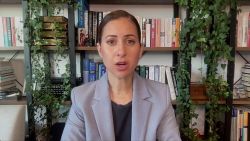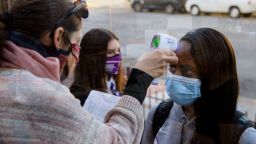Editor’s Note: Kent Sepkowitz is a physician and infection disease expert at Memorial Sloan Kettering Cancer Center in New York. The views expressed in this commentary are his own. View more opinion on CNN.
Two years ago, the calamitous first wave of the Covid-19 pandemic hit the US with unprecedented intensity. The depth of the terror can be difficult to recall and, thanks to advances in diagnosis, treatment and vaccination, is unlikely to recur. For scientists, however, it is crucial to revisit the dark time and rethink what happened by examining the almost endless data that was collected to try to better understand both the immediate and the long-term effects this disease has on the body.

For example, one crucial piece of information came from autopsy reports that demonstrated how the virus affects various organs in the body.
Because so many deaths were due to respiratory failure, many colleagues I talked with expected to find progressive pneumonia with lung destruction as the cause. However, researchers discovered something entirely different: blood clots in the lungs (also referred to as pulmonary emboli). Furthermore, they found countless additional smaller clots in many other organs as well. (Note that experts distinguish between clot and thrombus and embolus but for simplicity, we’ll call them all clots.)
These findings are particularly topical now, following an important article just published in Nature Medicine. Researchers utilized the vast databases of the US Department of Veterans Affairs (VA) to examine more than 150,000 people who had survived Covid-19 infections and compared them with millions of people in the VA database who were similar in age, sex and other features but who did not develop Covid-19.
Importantly, they looked at overall health not just in the immediate aftermath of the infection, but an entire year after Covid-19. (The researchers estimated the “post-Covid year” timeframe among those not actually infected using statistical methods.) Investigators included Covid-19 survivors who were never hospitalized (131,612 people), in addition to those who recovered after staying in the intensive care unit (5,388 people) or regular hospital ward (16,760 people).
The results are clear and very significant: Compared with similar people who had not been infected with SARS-CoV-2, those who recovered from infection had many more blood clots, heart problems and strokes. The extent of the differences across the 20 different cardiovascular conditions is among the greatest of any clinical study I have read. It is jaw-dropping.
The study is telling us something we don’t particularly want to hear, but that is a critical piece of information for many reasons. First, it will help those trying to understand long Covid; second, it can help direct prevention and treatment decisions for those with active Covid-19 as well as those who survived the disease; and finally, it likely will contribute to an improved understanding of the very complicated dance of clotting and anti-clotting that goes on within each of our bodies every day.
The VA study has important limitations. It involves people infected in 2020 who are at least a year post-infection; these people likely had the initial “wild” strain of SARS-CoV-2 or perhaps the Alpha variant, which dominated in late 2020. Not enough time has passed to know if similar long-term dysfunctions of the blood vessels and heart also will occur among survivors of Delta or Omicron variant infections. And the study cannot predict the health impact of Covid-19 two and three and 10 years after recovery.
Indeed, this last issue may be the most pressing. No one knows how long the cardiovascular abnormalities will persist or if they will resolve at all. Advising this very large group of people who recovered from Covid-19 and may have lingering health issues is therefore a murky business. Should each find a cardiologist? A blood clotting specialist? Will long-term Covid-19 management become a new subspecialty similar to the not-so-long-ago emergence of the AIDS specialist?
It is altogether uncertain what comes next, but the fact that almost 80 million Americans have been infected makes a cohesive plan for their health care a necessity. Experts will draw up basic guidelines to help patients know the best path forward. Though, once again similar to the field of AIDS medicine, much will be done by trial and error as some people will be followed too intensely and others not intensely enough. Over time, a crisp and simple “if this, then that” sensible approach will likely emerge.
It would be nice to think that this sort of information would be powerful to convince people still unwilling to receive the Covid-19 vaccine or the booster shot by providing simple and horrifying truths about the aftermath of the disease. Up till now, the core of the hesitancy has not been influenced by facts and figures.
This new welter of facts, though, may be different (hope springs eternal). The suddenness of the pandemic and the suddenness of so many deaths were unspeakably tragic. Yet, for those patients and families who have managed to stay Covid-free over the last two years, the fear of Covid and the urgent desire to protect oneself may have been dulled by time and the relatively mild symptoms that were widely reported with the last variant of concern.
But now, with an elevated risk of heart disease, stroke and blood clots as a possible long-term effect of Covid-19 – conditions that can be chronic and slowly debilitating – perhaps the VA researchers will do something that almost a million American deaths has not: frighten a broad swath of the vaccine-hesitant into rolling up their sleeves and taking the shots.




















